Tyre choice and tyre pressure are the two factors that will have the biggest impact on the performance, control and comfort of your gravel bike.
Tyre pressure is the easiest of these two variables to control and getting the right gravel tyre pressure for your bike will make a huge difference to your ride.
In this guide, we’ll run through why getting your gravel bike tyre pressure right is so important and the factors that can help you find a pressure that works best for you.
While the exact pressure will be specific to every rider, their bike and the trails they ride on, it’s fairly easy to get into the right ballpark.
We asked WTB for additional guidance on optimising your gravel bike tyre pressure and have included some of the brand's opinions below.
We've also got guides to road bike tyre pressures and mountain bike tyre pressures.
Recommended gravel bike tyre pressures
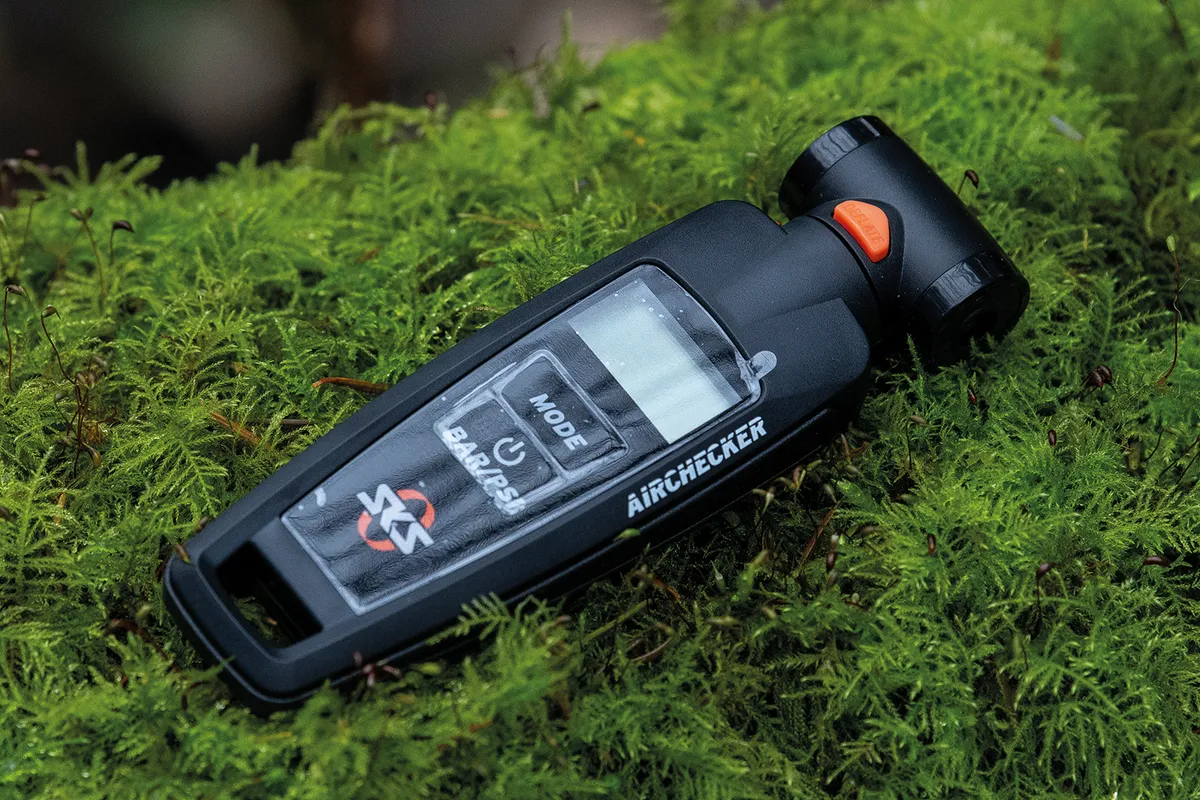
| Measured tyre width (mm) | System weight (kg) | Suggested front tyre pressure (psi) | Suggested rear tyre pressure (psi) |
|---|---|---|---|
| 35 | 65 | 36 | 38 |
| 75 | 37 | 39 | |
| 85 | 38 | 40 | |
| 95 | 39 | 41 | |
| 105 | 40 | 42 | |
| 40 | 65 | 29 | 31 |
| 75 | 30 | 32 | |
| 85 | 31 | 33 | |
| 95 | 32 | 34 | |
| 105 | 33 | 35 |
| Measured tyre width (mm) | System weight (kg) | Suggested front tyre pressure (psi) | Suggested rear tyre pressure (psi) |
|---|---|---|---|
| 45 | 65 | 24 | 26 |
| 75 | 25 | 27 | |
| 85 | 26 | 28 | |
| 95 | 27 | 29 | |
| 105 | 28 | 30 | |
| 50 | 65 | 19 | 21 |
| 75 | 20 | 22 | |
| 85 | 21 | 23 | |
| 95 | 22 | 24 | |
| 105 | 23 | 25 |
Some tyre manufacturers offer specific pressure recommendations or calculators for their range of gravel bike tyres depending on your weight. These can often make for a good starting point.
Once you have inflated your tyre, it is worth measuring the actual size. Gravel bike wheels vary in rim widths and you might find the tyre measures narrower or wider than the size stated on the sidewall.
If the actual inflated tyre width is wider, you’ll want to use slightly less pressure than recommended and vice versa.
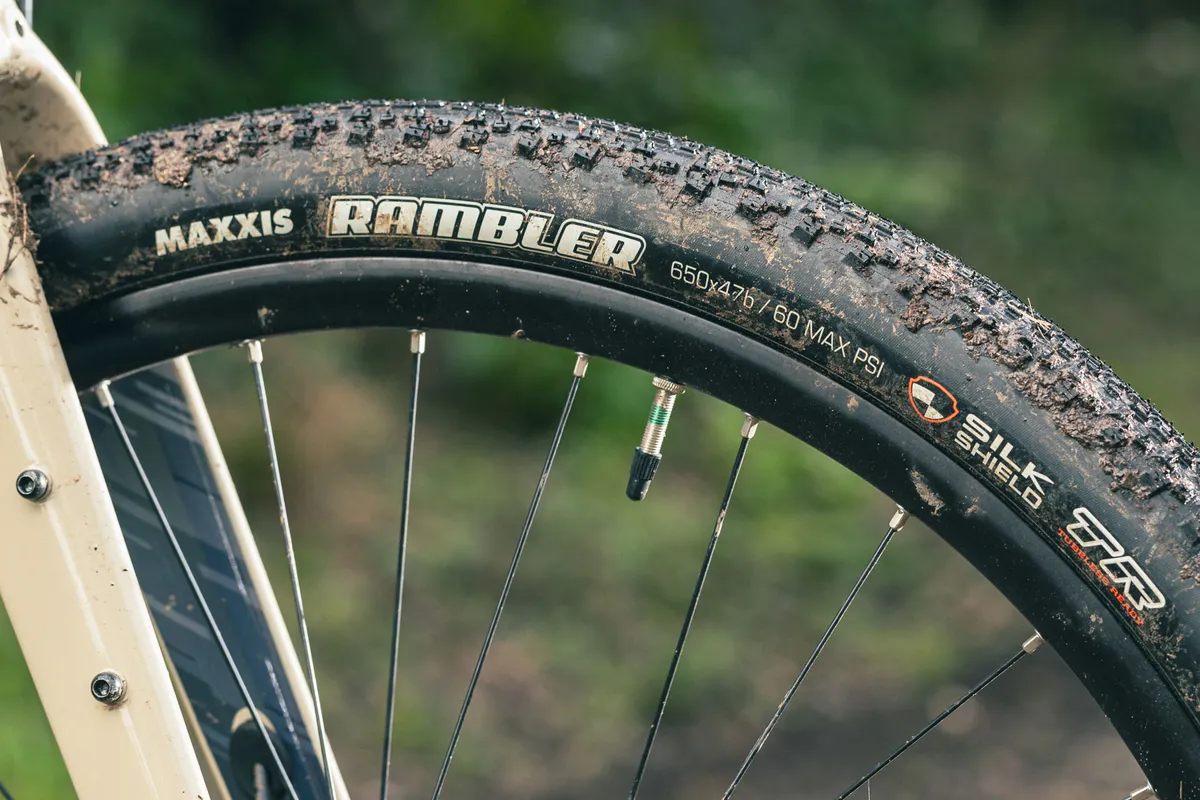
It’s also worth noting if there is an upper pressure limit set by the rim and tyre manufacturer, which will typically be found on the rim or tyre sidewall. You shouldn’t exceed the lower measurement of the two.
If you have a set of wheels with hookless rims, the maximum permitted tyre pressure may be much lower than with hooked rims.
Above is a table of recommended gravel tyre pressures for a range of system weights and tyre widths. This is based on our experience, recommendations from tyre brands and suggested pressures from tyre calculators.
Again, it’s worth stressing these are just starting points – experimentation is encouraged to find the right gravel tyre pressure for you.
You’ll also want to make sure you check your pressures before every ride because tyres deflate over time.
Other key points to consider
Before we delve into the details, it’s worth considering why optimising the pressure of your gravel bike tyres is so important.
Why is gravel tyre pressure so important?

Finding the optimal tyre pressure will make your gravel riding easier, more comfortable and you’ll find an increase in grip on all terrain, as well as a reduced risk of puncturing.
In fact, WTB says “tyre pressure is the only way to fine-tune how your bike reacts to the terrain”.
Optimising gravel bike tyre pressure is also critical to reduce rolling resistance – how much energy your tyres absorb as they roll – and improve comfort.
If your gravel bike tyre pressure is too low, it will take more effort to maintain your chosen speed because energy is lost in the deformation of the tyre casing and friction between the tyre and ground.

You also risk potential sidewall and rim damage. The tyre will squirm under you as you ride and if you’re running tubeless tyres, you also risk burping the tyre. A burp is where the tyre bead briefly comes away from the rim, expelling air.
If your pressure is too high, the tyre will transfer vibrations from the road or trail to your hands, resulting in decreased comfort and wasted energy.
An over-inflated tyre reduces deformation when you hit a rock or root and the tyre will also be more prone to sliding out.
An over-inflated tyre may also be slower because it will be unable to deform to imperfections on the trail.
Harder does not always equal faster
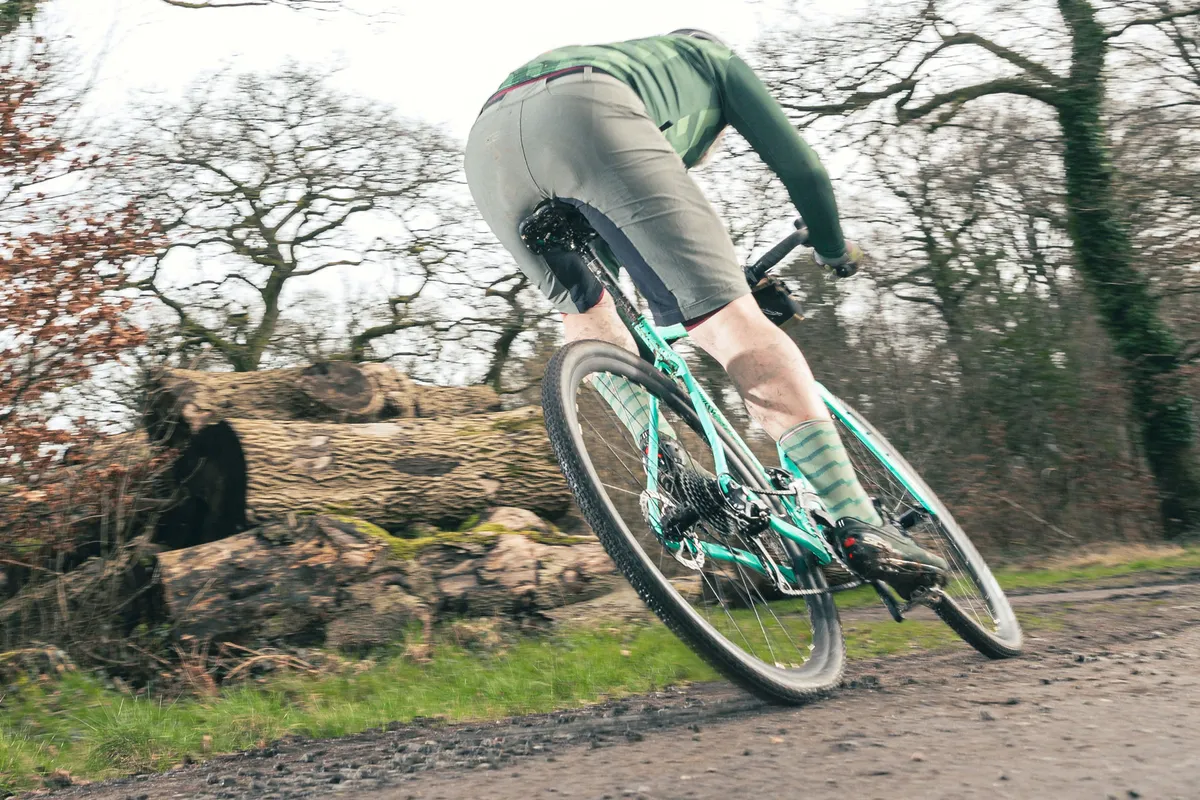
Although high tyre pressures might feel fast, they’re usually not unless you only ride your gravel bike on the road – and, even then, it’s not always the case.
Once you go past a certain point, increased pressure will decrease grip, increase high-frequency vibrations and cause extra muscular fatigue.
WTB says: “If you’re unsure where to start, it’s best to start with your tyres a little firmer, then drop the pressure as you go until it feels right”.
It’s easier to drop pressure in small increments than have to stop and inflate the tyre with a mini-pump mid-ride.
What you’ll need
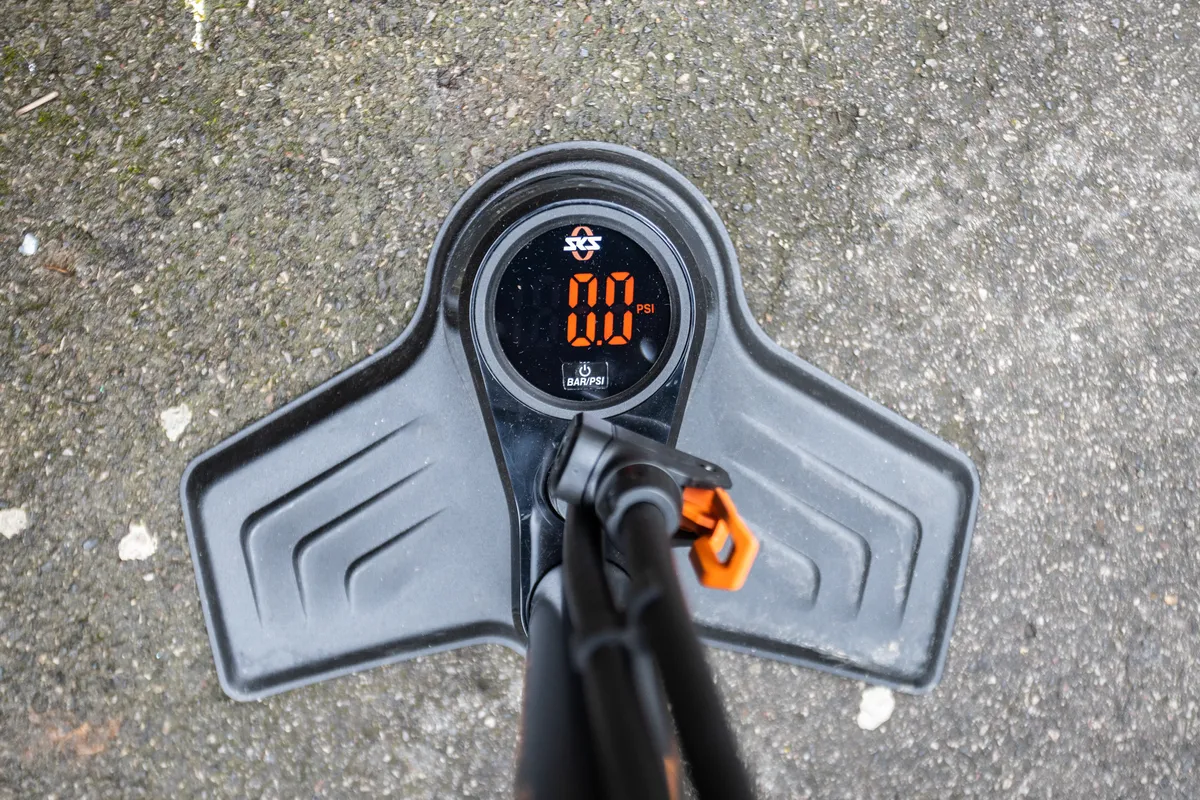
Ideally, you’ll need a good-quality track or floor pump with an in-built pressure gauge.
Although you don’t need to spend the earth, it’s worth investing in the best possible option you can because it will see a lot of long-term use.
Investing in one of the best tyre pressure gauges can work wonders too if you really want to fine-tune your tyres.
How to choose the right gravel bike tyre pressure for you
The above recommendations are intended as general starting points. Once you’ve settled on something that’s about right, we recommend you begin experimenting while considering the following factors to find the right gravel bike tyre pressure for you.
Tyre and rim width

Determining the actual size of your tyres is crucial to calculating optimum pressure.
Despite tyres being labelled a certain size, the actual inflated size of any tyre will depend on its design and the internal rim width of the wheel. Using a pair of digital vernier calipers is the most accurate method of measuring tyre width.
Rim and tyre width also impacts the shape of your tyre.
Wider tyres tend to perform better on wider rims. A wide tyre on a narrow rim can appear lightbulb-shaped in profile once inflated and a narrow tyre on a wide rim can become too square. Pressures will need to be adjusted to suit – for example, a wider tyre on a narrow rim may need to be inflated to a slightly higher pressure to prevent it from squirming when cornering.
If you’re unsure of which tyre width is best matched to the rim width, the ETRTO 2020 standard makes for a good starting point.
| Internal rim width (mm) | ETRTO recommended tyre range (mm) |
|---|---|
| 21 | 29-34 |
| 23 | 35-46 |
| 25 | 47-57 |
The tyre itself
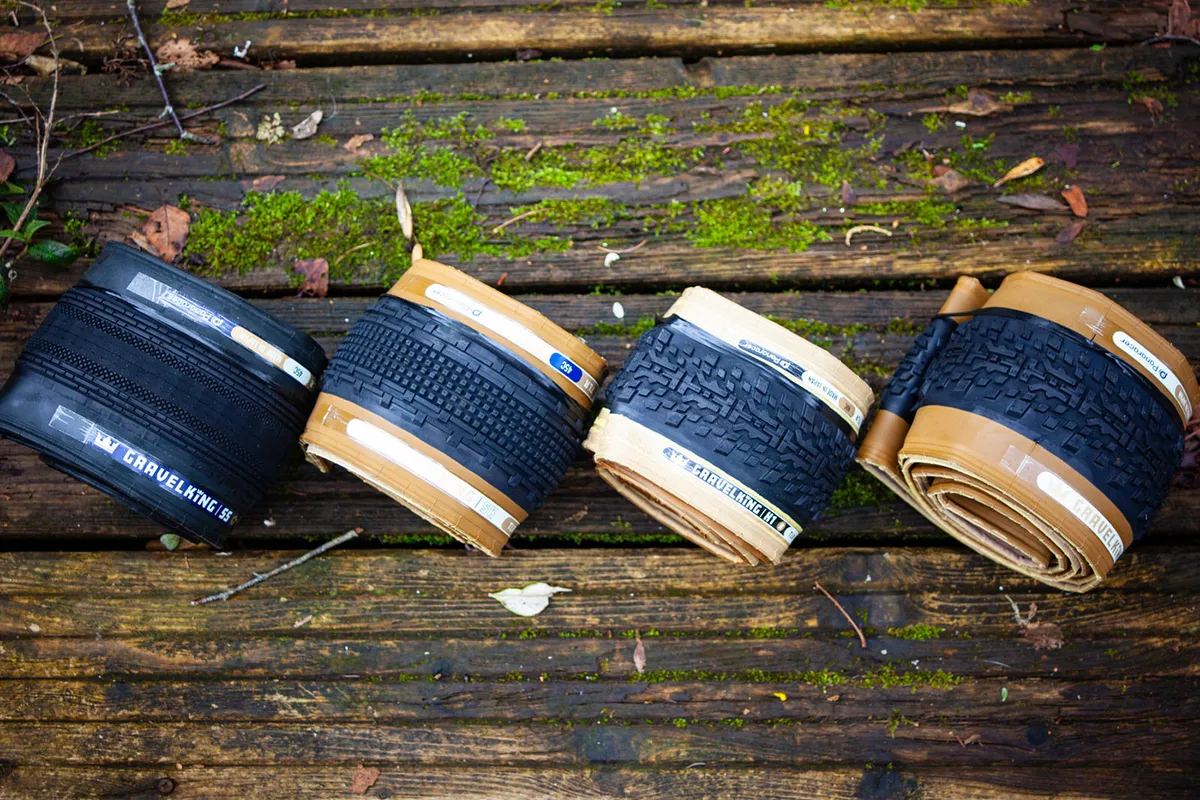
Tyres themselves are all different, because manufacturers have different construction methods and use different materials.
If you are fitting a new tyre of the same width, you shouldn’t automatically assume an identical pressure is optimal.
In the case of WTB, the brand says the recommended pressure range for its tyres is based on average rider weight of 160 to 180lb. The same may not be true of another tyre brand.
Rider and system weight
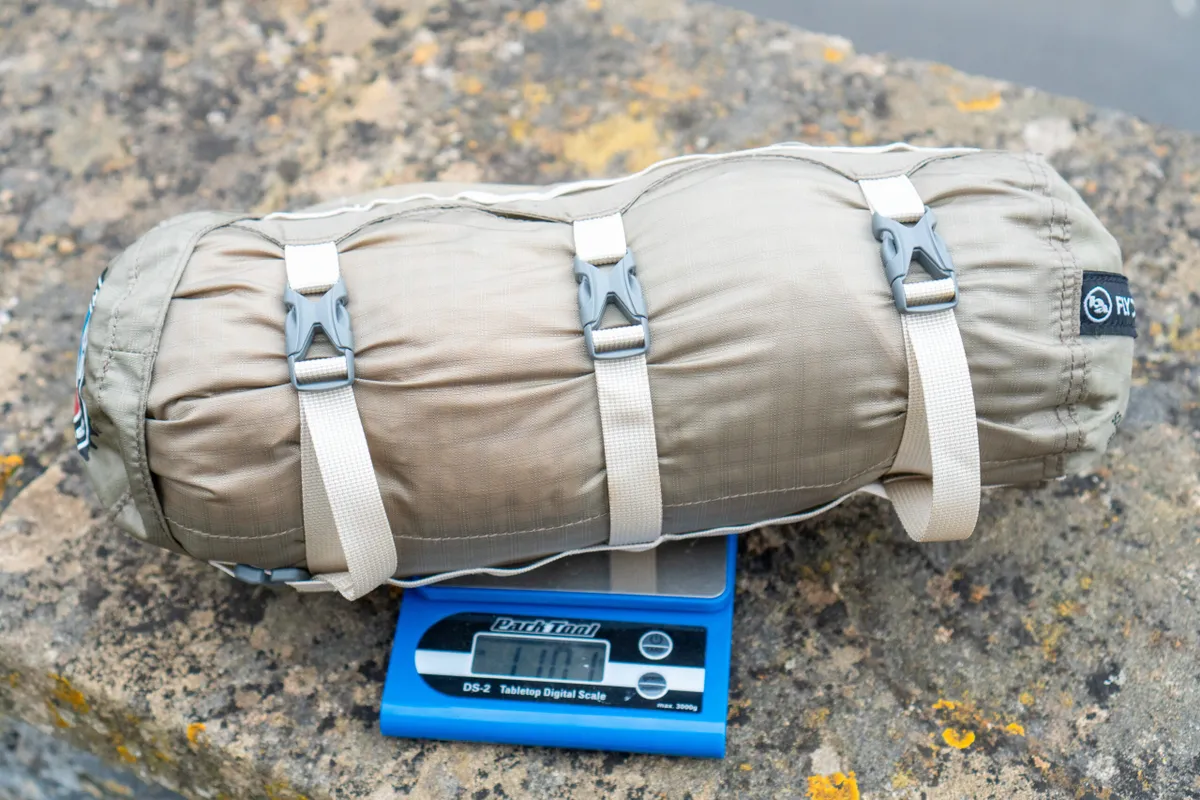
A heavier rider will need to run a higher pressure than a lighter rider.
However, while the rider makes up the vast majority of the system weight, the weight of your bike and any kit or equipment you’re carrying also count.
For example, if you’ve loaded your gravel bike up with bags to go on a bikepacking trip, you may need to add more air to your tyres.
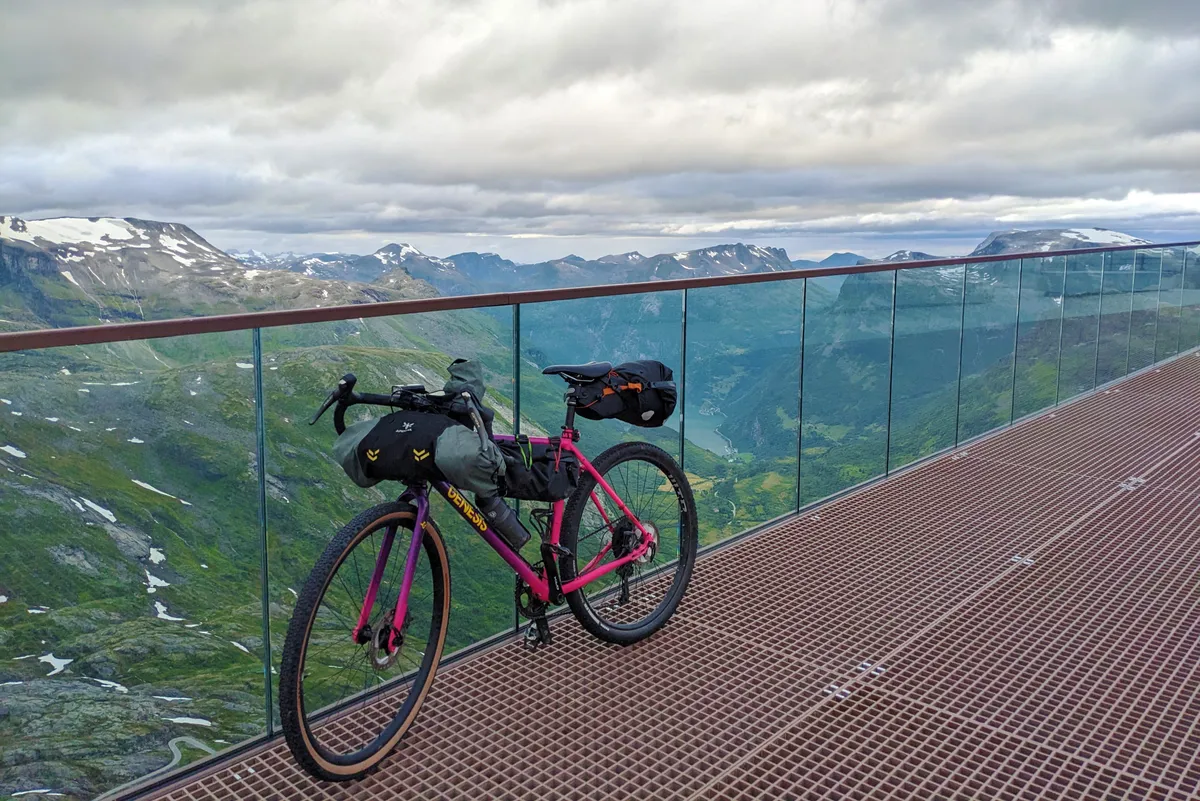
WTB likens tyre pressures to fine-tuning suspension on a mountain bike. As a rough guide, it suggests adding 2-3psi for every 4.5kg (10lbs) of extra weight.
As with road bikes, the rider’s weight is generally not evenly distributed across both wheels.
It’s usually the case that the rear wheel takes slightly more load than the front and, as such, you’ll want to run a slightly lower pressure in the front tyre.
Terrain
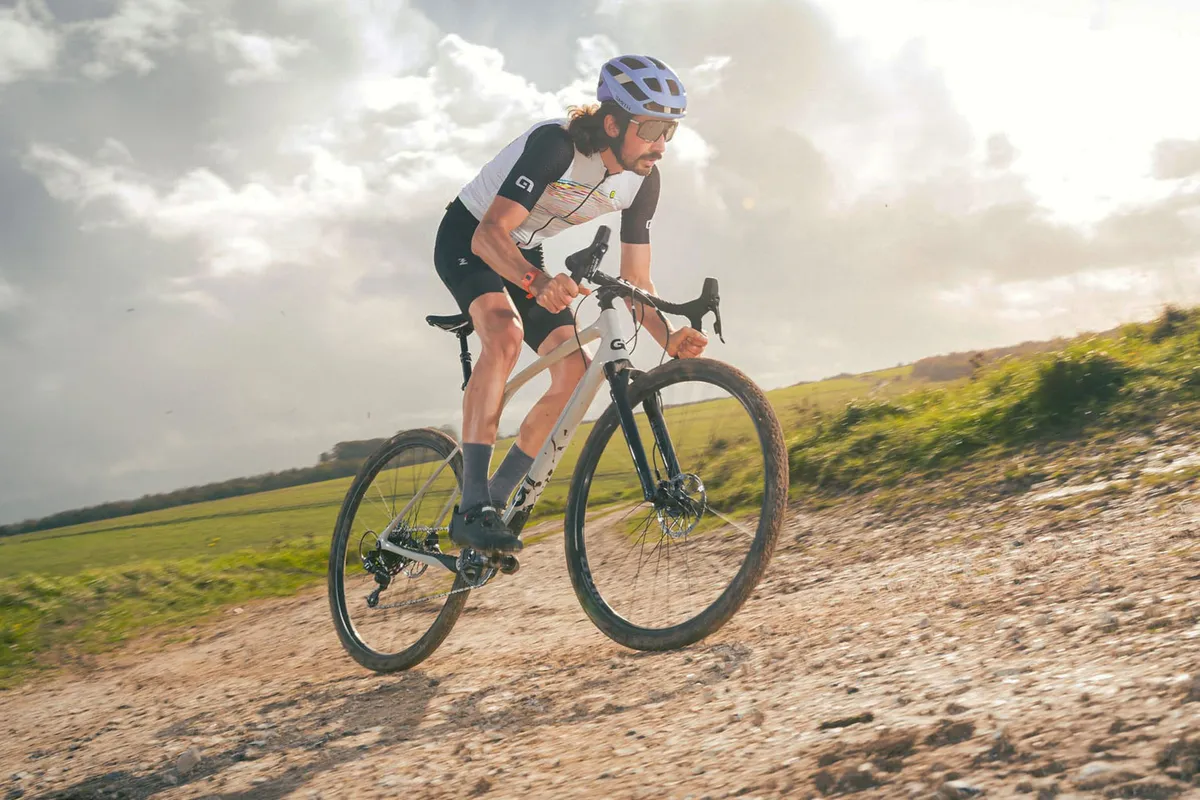
The terrain you ride on is, by far, the biggest factor that will determine the optimal gravel bike tyre pressure for you.
If you’re riding on perfectly smooth gravel, then a higher pressure will likely be faster. Conversely, you’ll want to run much lower pressures if you’re riding on wet, rooty off-road trails.
Switching to a wider gravel tyre can give you a larger volume of tyre to play with and you’ll have increased grip and comfort.
If your rides take in a wide mix of surfaces, WTB suggests an intermediate tread at an intermediate pressure will be right for you.
Tubeless
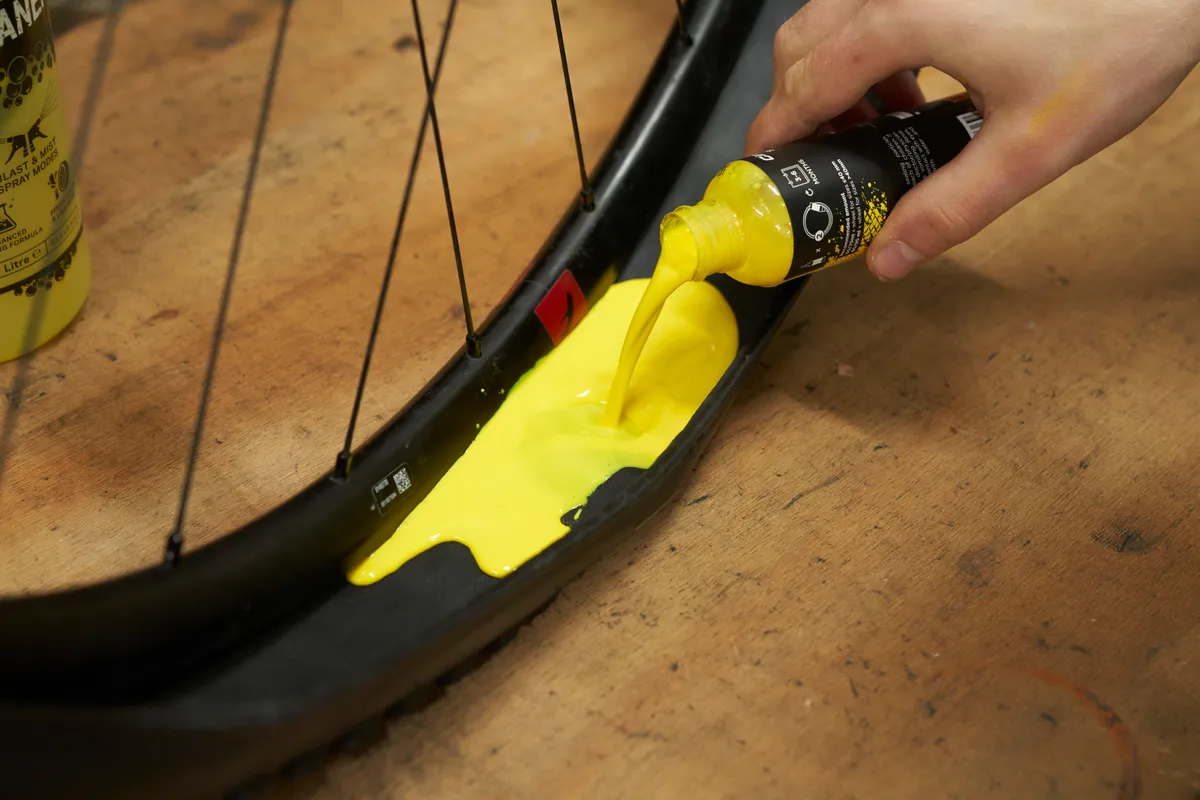
Most high-end gravel bike tyres can be run tubeless.
By removing the inner tube, you can run lower pressures with a lesser chance of pinch-flatting. Tubeless tyres allow for more grip and comfort because you can ride at lower pressures.
The printed pressures on tyres are primarily for inner tubes (though not always). Generally speaking, you can run your tyres lower than this if set up tubeless, though tyre manufacturers will be quick to point out you do so at your own risk.
WTB says all its aftermarket tyres are intended for tubeless use “so the maximum/minimum pressure values for each tyre are already optimised”. WTB doesn’t recommend running pressures outside of the stated range.
Tyre inserts
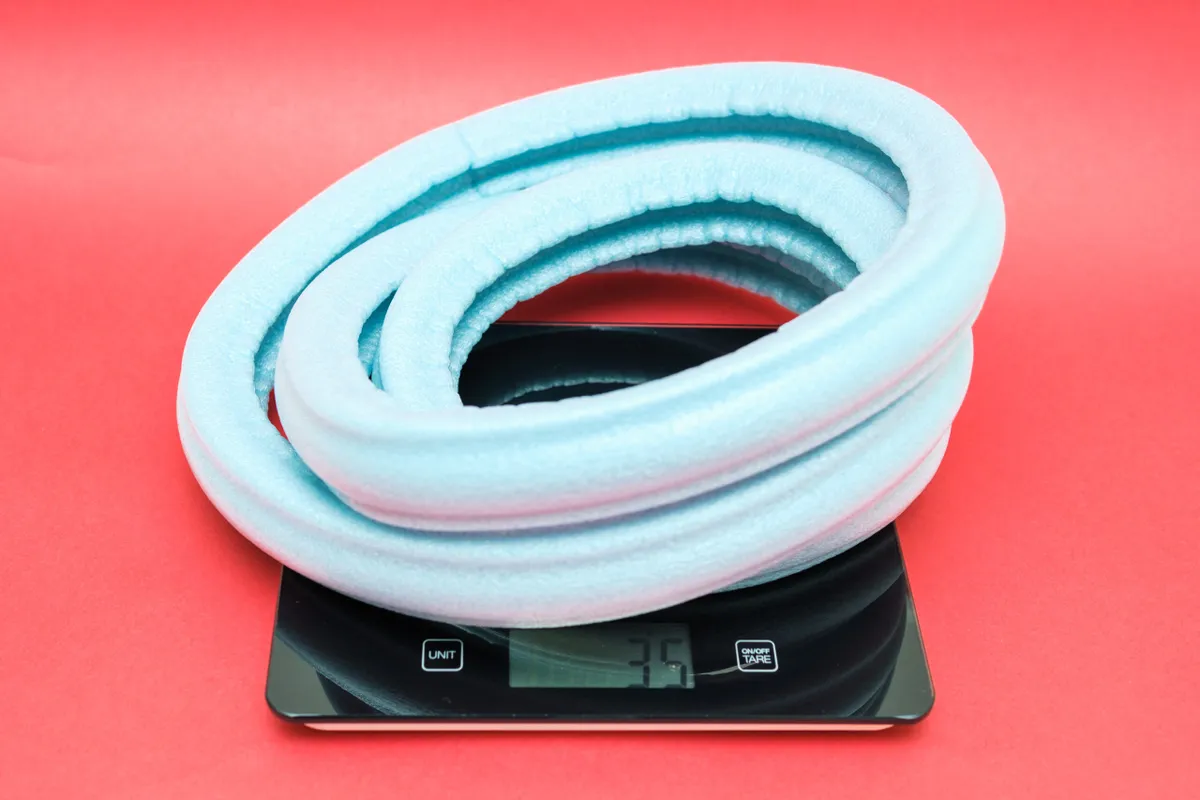
Common in the mountain bike world, tubeless tyre inserts for gravel riding are starting to become popular.
They could be a worthwhile proposition if you’re regularly flatting and are worried about damaging your rim or tyre.
You can run even lower pressures with them, given there is no inner tube to pinch and the insert provides further stability against the tyre.
Weather conditions and temperature
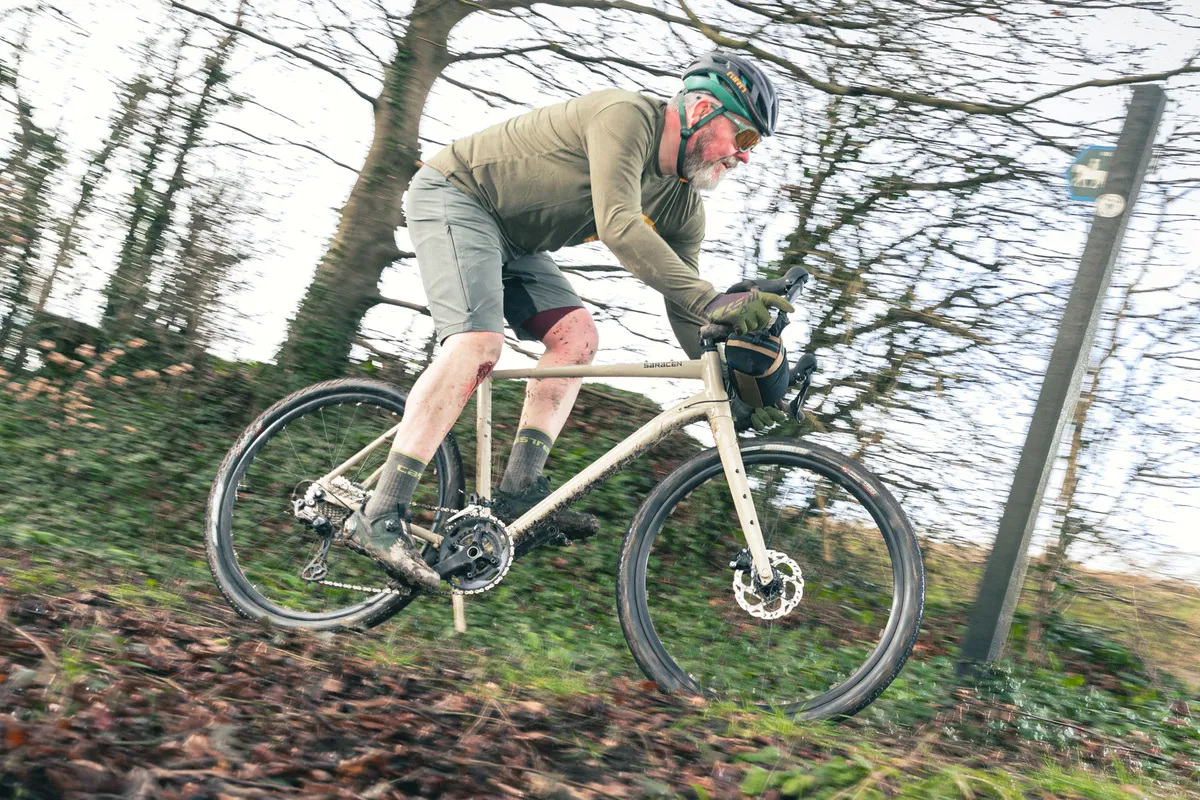
When the trails are wet, you should consider dropping your tyre pressure. This helps increase the rubber contact patch with the trail, improving grip.
WTB suggests: “Even a slight drop of just 1-2psi can make a noticeable difference when things get slippery.” However, it adds: “Most gravel rides are a mix of terrain, so you need to be careful you don’t compromise the performance and safety in other areas when in search of traction in the mud.”
If you’re gravel riding in the winter and the trails have frozen, the surface can become hardpack-like. You may want to run a slightly higher pressure if you’ve previously been running them softer to conform to the mud.
undefinedundefinedundefinedundefinedundefinedundefinedundefinedundefinedundefinedundefinedundefinedundefinedundefinedundefinedundefinedundefinedundefinedundefined